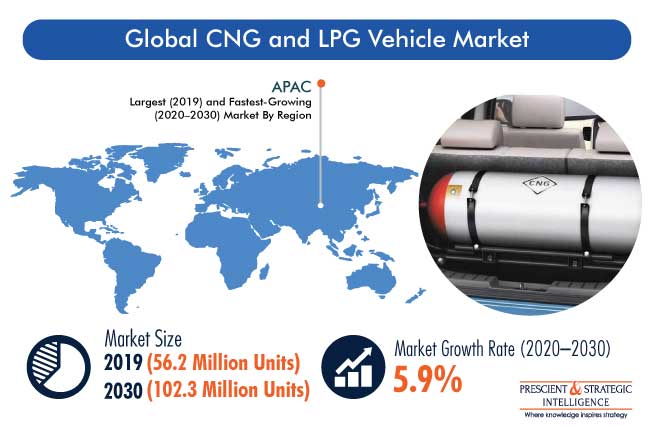CNG and LPG Vehicle Market To Touch 102.3 Million Units by 2030
CNG and LPG Vehicle Market Research Report@ https://www.psmarketresearch.c....om/market-analysis/c
The CNG and LPG vehicle market will grow at a rate of 5.9% in the years to come, and reach 102.3 million units by 2030.
The key factors, which are accountable for the industry growth include snowballing acceptance of clean-energy vehicles and capability of LPG and CNG vehicles to replace conservative vehicles. These vehicles are also economic in the long run and value for money for customers.
On the basis of fuel type, CNG vehicles will to hold larger share by the end of this decade and will progress at a higher rate in the years to come. The acceptance of CNG vehicles for mobility particularly in developing nations of APAC is the main factor powering the growth of the industry.
Passenger cars will have the largest share in the market by the end of this decade. The major reason for this growth is the growing acceptance of CNG- and LPG-based passenger cars all over the world, and initiatives of the government for decreasing air pollution.
APAC led the CNG and LPG vehicle market, in with regards to volume, in the past. This has a lot to do with the high growth in the automotive sector in China, South Korea, Japan, and India. China is the largest market of the APAC region.
Vehicles running on LPG and CNG have decreased fuel costs, when we compare them to the vehicles that are propelled by conventional fuels, for example diesel and gasoline vehicles.
In Europe, the cost of CNG is somewhere between USD 1.50 to USD 2.80 per gallon on a gasoline-gallon equivalent basis, resulting in a substantial decrease of 40–75% of fuel cost, as opposed to the diesel or gasoline cost. Businesses that make use of CNG-fueled trucks every so often see payback on the conversion cost in just 2-3 years of use.
In the U.S., the cost of LPG is about USD 2.00 per gallon, which helps in an approximate saving of up to 50% per gallon, as opposed to diesel and gasoline.
Other advantages of LPG consist of LPG refueling systems often are less costly to install and LPG fuel tanks are smaller in size than CNG, resulting in less loss of passenger or cargo capacity. Therefore, low running costs LPG and CNG vehicles as opposed to gasoline vehicles would in due course boost the demand for these vehicles, all over the globe.
